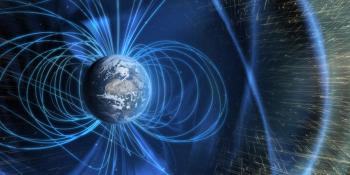Viendo archivo del miércoles, 27 julio 2011
Informe actividad solar
Any mentioned solar flare in this report has a scaling factor applied by the Space Weather Prediction Center (SWPC). Because of the SWPC scaling factor, solar flares are reported as 42% smaller than for the science quality data. The scaling factor has been removed from our archived solar flare data to reflect the true physical units.
Informe de actividad Solar-Geofísica 2011 Jul 27 2200 UTCPreparado por NOAA © SWPC y procesado por SpaceWeatherLive.com
Informe conjunto USAF/NOAA de actividad Solar y Geofísica
SDF Número 208 Publicado el 2200Z a las 27 Jul 2011IA. Análisis de regiones solares activas y de actividad desde 26-2100Z hasta 27-2100Z Solar activity was moderate. Region 1260 (N18E30)
produced a M1/1n flare at 1607Z as well as numerous C-class flares
during the past 24 hours. This region showed some magnetic
complexity (magnetic class beta-gamma) and changed steadily
throughout the day. Region 1261 (N15E60) is the largest group on the
disk (250 millionths) but is a simple magnetic beta group and only
produced one subflare during the day. New Region 1262 (N16W38) was
assigned and is a small D-type group with a weak delta configuration
in the trailing portion of the group. Despite its magnetic
complexity 1262 did not produce any flares. The eruption of a
filament from the northeast quadrant was observed at about 0620Z and
was associated with a faint, slow coronal mass ejection off the
northeast limb as observed by the LASCO C2 coronagraph beginning at
0642Z.
IB. Pronóstico de la actividad solar
Solar activity is expected to be
predominantly low but there is a chance for additional isolated
M-class flares from Region 1260.
IIA. Resumen de la actividad geofísica 26-2100Z a 27-2100Z
The geomagnetic field was quiet. The greater than 2 MeV electron flux
at geosynchronous orbit reached high levels during the period.
IIB. Pronóstico de la actividad geofísica
The geomagnetic field is
expected to be quiet for the next three days (28-30 July). Recent
analysis from Stereo-B and solar imagery suggest that the previously
anticipated high speed stream from a coronal hole is most likely to
start affecting Earth on 31 July.
III. Probabilidades del evento 28 Jul a 30 Jul
| Clase M | 40% | 40% | 40% |
| Clase X | 01% | 01% | 01% |
| Protón | 01% | 01% | 01% |
| PCAF | green | ||
IV. Penticton 10.7cm flujo
Observado 27 Jul 099 Previsto 28 Jul-30 Jul 100/100/105 Media de 90 Días 27 Jul 095
V. Índices Geomagnéticos A
Observado Afr/Ap 26 Jul 005/005 Estimado Afr/Ap 27 Jul 005/005 Previsto Afr/Ap 28 Jul-30 Jul 005/005-005/005-005/005
VI. Probabilidades de Actividad Geomagnética 28 Jul a 30 Jul
| A. Latitudes Medias | |||
|---|---|---|---|
| Activo | 05% | 05% | 05% |
| Tormenta Menor | 01% | 01% | 01% |
| Tormenta Mayor-Severa | 01% | 01% | 01% |
| B. Latitudes Altas | |||
|---|---|---|---|
| Activo | 05% | 05% | 05% |
| Tormenta Menor | 01% | 01% | 01% |
| Tormenta Mayor-Severa | 01% | 01% | 01% |
< < Ir a la visión general diaria
Últimas noticias
Últimos mensajes del foro
Geomagnetic storming, CMEs from AR 13664, 2024-05-09/10 1082Incoming Active Regions 247Traffic record broken!(?) Updated! 8Sporadic E and Flare activity 30Weakening of Earths magnetic field due to geomagnetic excursion 22
Más temasApoye a SpaceWeatherLive.com!
Mucha gente viene a SpaceWeatherLive para seguir la actividad del Sol o previsión de aurora, pero con esta cantidad de tráfico se incrementan los costos del servidor. ¡Considere hacer una donación si disfruta de SpaceWeatherLive para que podamos mantener el sitio web en línea!

Hechos clima espacial
| Último evento clase X | 2024/05/11 | X5.7 |
| Último evento clase M | 2024/05/10 | M3.83 |
| Últimas tormentas geomagnéticas | 2024/05/10 | Kp9 (G5) |
| Días sin manchas | |
|---|---|
| Último día sin manchas | 2022/06/08 |
| Promedio de manchas solares mensuales | |
|---|---|
| abril 2024 | 136.5 +31.6 |
| mayo 2024 | 139.8 +3.3 |
| Last 30 days | 170.5 +79.6 |


